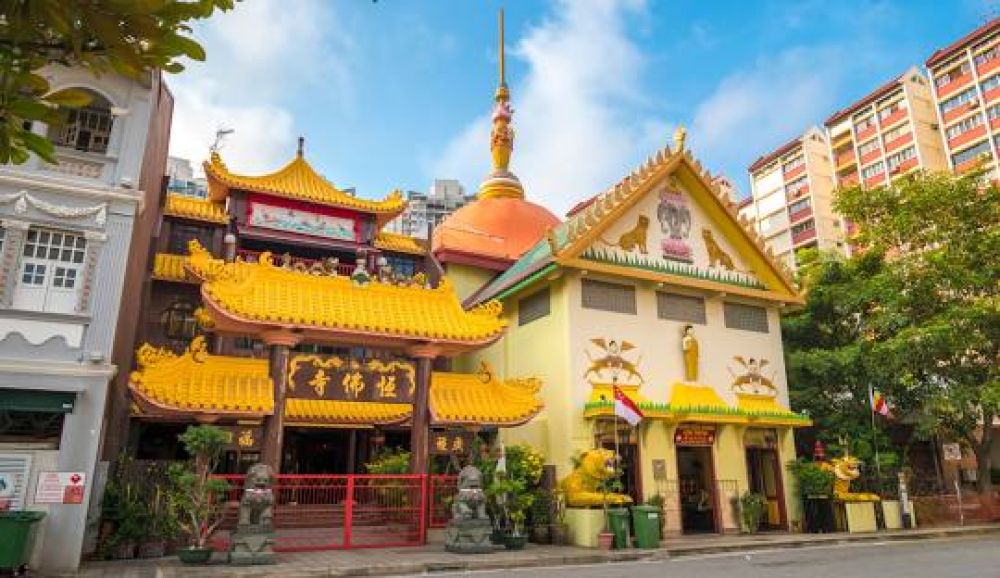

Also known as the Temple of 1,000 Lights, the Sakya Muni Buddha Gaya Temple is a renowned Thai Theravada Buddhist temple in the vibrant Little India district of Singapore. It boasts a rich history and is an iconic representation of the cultural melting pot that Singapore represents.
The temple was founded by a Thai monk, Venerable Vutthisasara, in 1927. The main feature of the temple is the striking 15-meter tall statue of a seated Buddha, which is surrounded by hundreds of small light bulbs, giving rise to the temple's nickname. Over the years, the Sakya Muni Buddha Gaya Temple has become an important place of worship and a must-visit sacred site for both local and international Buddhists.
The temple combines elements from different Buddhist traditions, showcasing an eclectic design that draws from Thai, Chinese, and Indian influences. This blend of architectural styles represents Singapore's multi-ethnic background. In the main hall, the ceiling is adorned with a colorful array of lanterns and the walls are lined with paintings depicting the life of Buddha, illustrating the rich heritage and craftsmanship that have been preserved through the years.
The temple is open daily, and visitors are welcome to explore the serene environment, offer prayers, or simply observe the practices and rituals that take place. The atmosphere within the temple grounds is one of peace and contemplation.
Little India, the surrounding neighborhood, is itself a tourist attraction known for its vibrant culture and history. It is one of Singapore's most dynamic areas, filled with traditional Indian shops, aromatic spices, colorful textiles, and an array of Indian cuisine. Visitors to Little India will find the area pulsating with life and culture, encapsulating the essence of India's vast diversity.
The history of tourism in Singapore dates back to the early 20th century but experienced significant growth from the late 1960s and early 1970s when the government began to develop Singapore as a major tourist destination. Singapore's tourism industry has since evolved, with the city-state now recognized for its high-end shopping experiences, luxury hotels, fine dining, vibrant arts scene, and bustling nightlife.
Today, Singapore is seeing a trend towards experiential and cultural tourism. Visitors are looking to immerse themselves in local cultures, and Little India offers just that type of experience. Another trend is sustainable tourism, with many travelers seeking eco-friendly options and experiences that promote environmental consciousness.
In recent times, Singapore has been investing in "Smart Tourism", using technology to enhance the visitor experience. Apps and digital services make it easier for tourists to navigate the city and discover attractions such as the Sakya Muni Buddha Gaya Temple.
The Sakya Muni Buddha Gaya Temple, nestled in the heart of Little India, is not just a testament to religious devotion but also stands as a symbol of Singapore's cultural diversity and harmony. The temple's allure, alongside the buzz of Little India, contributes significantly to the rich tapestry of tourism in Singapore, making it an essential stop for anyone looking to experience the city's unique blend of cultures and traditions.